I’ve been playing recreational ball for a long time now, and I am naturally an analytical pain-in-the-ass, so I like to think that I know something about hitting a baseball.
Hitting a baseball is a tricky thing. It just so happens that taking a pitch from 60 feet, 6 inches at upwards of 100 mph and trying to hit it squarely with your bat is right at the limits of human ability. Amazing how it worked out that way.
4 Keys: Mechanics, Coordination, Relaxation, Confidence
Learning proper hitting technique will NOT make you a Major Leaguer. The natural talent must be there. Natural talent is responsible for about 90% of a hitter’s potential. Mark McGwire with bad form will hit better than a forklift operator, regardless of how good his form is (unless the forklift operator is Barry Bonds).
What makes up natural talent? It can be broken down into components:
- Coordination
- Muscle strength, which can in turn be broken down into natural mass, natural conditioning, and lucky muscle insertion points
- A sense of balance
Each of these things can be improved slightly with the proper training, but a person still needs a certain amount of eye-hand coordination, physical strength, and a sense of balance to hit a baseball. Only after the basics are in place should proper hitting technique be studied to take things to the next level. If you have the natural talent, proper hitting technique can make you that much better. Good hitters are born. Great hitters are made.
While I feel like I understand proper hitting technique, I have come to the conclusion that I don’t have the natural talent to become a Major League baseball player. And that’s why I’m making web sites about hitting instead of playing third base for the Yankees.
Listen to Your Body
The first step in becoming a better hitter is figuring out what kind of body you have. What natural tendencies does it have? Everybody is built differently. Some people are big, some are small. Some are fat, some are thin. Some are flexible, some are not. Some have stronger arms, others have stronger legs. Figuring out how your body is constructed, determining your physical strengths and weaknesses, and adjusting your swing accordingly will enable you to hit the ball with more consistency and with more power.
Pick up a bat. Swing it naturally. Don’t try to emulate one of your idols. Just take a good swing, and swing the bat in the way that feels most comfortable to you.
Different configurations of bones, tendons, and muscles from person to person mean that one hitter delivers his strongest swing differently than the next. When you swing, your body naturally accommodates your individual physical idiosyncrasies and produces the strongest, smoothest, most fluid motion that you’re capable of. How did you swing the bat? With your arms? Did your hips open up? Did you shift your weight forward? Did you upper-cut? Did you follow through with one arm or two?
You’ve got to learn the mechanics of your body so that, when you learn a bit more about hitting, you can decide what needs to be corrected and what can be corrected. Being aware of how your body naturally swings a bat will enable you to determine which hitting style you naturally subscribe to and perhaps the one you should pursue.
The Hitting Styles
There have been three dominant hitting styles in the history of baseball: Early Weight-Shift, Rotation, and Modern Weight-Shift. Most Major Leaguers use one of these three styles.
| Early Weight-Shift | Rotation | Modern Weight-Shift | |
|---|---|---|---|
| form | lunging forward into pitch, weight continues moving forward, two hand follow-through | weight stays back, back arm dominant, pushing the bat, power from arms, two-hand follow-through | weight shifts forward, converted into hip rotation, lead arm dominant, pulling the bat, one-hand follow-through |
| strengths | plate coverage, consistent contact | more power, high/inside pitches, quicker swing offers more consistent contact with fast pitching | consistent contact, moderate power, low/outside pitches |
| weaknesses | no power | strikeouts, low/outside pitches | less power, high/inside pitches, slower swing makes you more vulnerable to fast pitches |
| students | Ty Cobb, Pete Rose, Wade Boggs | Ted Williams, Jose Canseco, Mo Vaughn, Sammy Sosa | George Brett, Ken Griffey Jr., Frank Thomas, Manny Ramirez |
| examples | 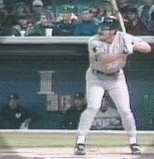 Wade Boggs
|
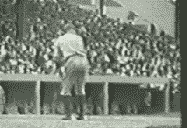 Babe Ruth (he shifts his weight forward quite a bit, but still rotates)
|
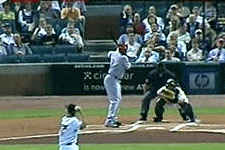 Ken Griffey Jr.
|
In the early days of baseball, due to the “softer” balls, expansive parks, and stubborn philosophy used at the time, emphasis was on consistent contact and not striking out. And the best way to achieve this was with the early weight-shift system. Hitters would stride into the pitch, almost bunting the ball, and then continue the motion forward by running to first base, hoping to beat out the resulting infield grounder. Today, with an emphasis on home runs and power, very few players use the early weight-shift style. But Pete Rose and Wade Boggs, two of the most recent early weight-shifters, led their league in hits almost every year.
Eventually, fans wanted more home runs, and managers realized that they could win ballgames with a more explosive offense, and players who could hit for power became more desirable. In the 1940’s, Ted Williams articulated the rotation method and became the best power hitter of his generation.
Williams would keep his weight back and, using his whole body, whip his bat through the strike zone. He would pull any pitch over the strike zone, particularly inside pitches. Williams became one of the best hitters ever. The rotation method is still popular today, used most often by bigger hitters who swing for the fences. Unfortunately, these hitters aren’t blessed with the eye of Ted Williams, and they regularly lead the league in strikeouts.
In the 1960’s, coaches developed the modern weight-shift system. Sacrificing a bit of power for more consistent contact, these hitters would maintain higher batting averages while hitting more doubles and triples. A few of today’s modern weight-shifters like Ken Griffey Jr. and Frank Thomas happen to be big and strong enough to hit home runs as well.
A few “hybrid” players, like Rod Carew, Mike Schmidt, and Will Clark, had the reflexes and coordination to adjust their style as the pitch was coming. They’d recognize the pitch and use the style that enabled them to hit the ball most effectively. Most people simply don’t have the physical ability to do this.
There are still others who develop unique styles that work best for their unique body types. Mark McGwire used his tree-trunk base and mammoth arms to fling the bat around using his wrists. Gary Sheffield cocks his bat like a madman to prepare his wrists for explosive action.
I’ve studied them all (approaches to hitting), and I see some things I believe in one method and some in another – and some things are good for one player and not for another. The basics are the basics, and we all have to teach those, but after that you have to tailor it to the individual.
– Dusty Baker
Play around with other hitting styles if you like. Try to swing like your favorite Major Leaguers. But in the end, stick with what works best for you. You will find that you are most successful if you hit the way your body tells you to. Bret Barberie, ex-Montreal Expo infielder, once said that he modeled his hitting style after George Brett, Don Mattingly, and several other idols, but that didn’t exactly make him a household name.
Choose a Bat
The contact between a baseball bat and a ball is governed by several laws of physics, with the most prominent being the Law of Conservation of Momentum. When the bat strikes the ball, the momentum of the bat and ball before contact must equal the momentum of the bat and ball after contact. This interaction determines the speed and direction of the ball after it is hit. The equation for conservation of momentum is:
Anyone knows that lighter bats are easier to swing. Reducing the weight of your bat increases bat speed. Conversely, increasing the weight of your bat reduces bat speed. In the real world, there are pros and cons of going in each direction.
Using a lighter bat will increase bat maneuverability, making it easier to make fine adjustments to the bat’s motion (i.e. to adjust for unexpected speed or movement of the ball) during your swing. This means, assuming you’re keeping your eye on the ball, that you’ll hit a few balls more squarely and foul off a few you might not have touched before. The increased bat maneuverability will mean more consistent contact. So when in doubt, or if you’re slumping, go lighter to give yourself a bit of an edge.
But using a lighter bat also means a smaller, less powerful sweet spot to work with. And any ball missing that sweet spot won’t be getting out of the infield. In that sense, a heavier bat will give you more room for error.
In the end, under major league conditions, increases in bat speed are generally more beneficial than increases in bat weight. For every additional mile per hour of bat speed, a baseball typically travels about 9.6 feet farther. So start with a light bat and swing successively heavier ones until you need to start modifying your swing to get the bat around. If you can still swing the bat naturally, you have found the bat weight that is probably the right weight for you.
The more consistently you can make good contact with a variety of pitches, the more you can gamble with heavier bats. Incidentally, Babe Ruth used the heaviest bat in history, at 46 ounces. Mo Vaughn used a 36-ouncer. Bobby Bonilla also used a heavy bat, but he sucked. Most Major Leaguers use a bat in the 31- to 32-ounce range. Check out this article for some unique perspectives on the history of bats.
Length is just a matter of preference. Play around with different lengths until you find one that feels right. Keep in mind that a longer bat puts more weight out further from the hands, which in effect makes it heavier to swing than a shorter bat of the same weight. Different body types and different mechanics may dictate which bat length works best.
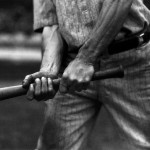 Grip is also a matter of preference. Generally, thick handles are better for bat control, and thin handles are better for power. Some people like big knobs (like Sammy Sosa), others like tapered grips.
Grip is also a matter of preference. Generally, thick handles are better for bat control, and thin handles are better for power. Some people like big knobs (like Sammy Sosa), others like tapered grips.
Today’s bats are different than those of the past. They have larger barrels and thinner handles. Ruth used a 36″ and 42 ounce bat with a medium handle and medium barrel. Hank Aaron used a bat similar to Babe Ruth’s except his was 35″ long and weighed 33 ounces. Mickey Mantle used a medium handle and a small to medium barrel, at 35″ long and 32 ounces. Roger Maris used a medium barrel with a medium handle.
And then there’s the whole metal vs. wood debate:
- Metal bats generally have a larger sweet spot, making it easier to make solid contact with the ball. This leads to more consistent hits and reduces the chances of mishits.
- Metal bats, typically made of aluminum or composite materials, tend to generate higher ball speeds upon contact. The ball can travel farther and faster, partly due to the trampoline effect, where the bat compresses slightly and then springs back.
- Metal bats are often more evenly weighted or even slightly end-loaded, depending on the design. This can allow for faster swing speeds and more control.
- The feedback from a metal bat on contact is generally less pronounced. The bat absorbs more of the vibration, which can make it more comfortable for hitters, especially on mishits. But with this comfort, you lose the instant feedback of whether or not you hit the ball well.
If you’re reading this, chances are that you won’t need to hit with a wood bat for a while. But try it sometime. You will instantly notice that a wood bat is balanced differently and that balls come off of it differently. If you learn to hit well with wood, you will murder the ball with metal.
A starting player needs to learn to make contact with the ball and hit close to the sweet spot of the bat before performance differences in the bats become an important factor.
– George Manning, Louisville Slugger bat engineer
Your Stance
Regardless of which hitting style you use, there are certain batting stance fundamentals common to them all.
Position yourself far enough away from the plate so that your best swings will bring the sweet spot of the bat across the center of the plate. If you kill inside pitches, move closer to the plate. If you kill outside pitches, move farther away. For hard throwers, stand further back in the box, behind the plate. For junkballers, stand in front of the plate.
Most hitters hit with an even stance. Positioning your feet even to the plate gives your body a stable platform to hit with. Some players prefer an open stance, with their front foot behind the back foot, opening their body up to the pitcher. This allows them to minimize head turn and see the pitch better. Others prefer a closed stance, so that the opening of the legs opens up the rest of the body when the swing begins. Regardless of how you stand, your feet usually shift and line up as you step into your swing, so the position of your feet before the pitch is just a matter of preference.
Grip the bat as you would in mid-swing, at the point of contact. That is how you should grip your bat from the beginning of your swing. Keep your hands firm, but not so tight that the bat is immobile. As you swing, your hands will be making fine adjustments to your bat’s position in the strike zone. Tight hands will prevent these adjustments.
The angle at which you hold your bat can make a difference. If it’s flat (parallel to the ground), you might have a hard time realigning it to hit a low pitch. If it’s straight up (perpendicular to the ground), you might have a hard time realigning it to hit a high pitch. Most hitters prefer to keep it somewhere in-between (at about 45°) so that a minimum amount of realignment is required on any given pitch. Again, find what’s comfortable and effective.
Some coaches make hitters keep their back elbow up, while others make them keep it down. Does keeping your elbow pressed against your body restrict movement? Does your raised elbow come down when you swing? Do what’s comfortable.
Clear Your Mind
While on deck, swing a heavy bat to loosen up. Watch the pitcher to gauge his speed. Assess the basic game situation before you step in the box. How many outs are there? Who is on base?
You can’t think and hit at the same time.
– Yogi Berra
Take a deep breath, relax your body, and clear your mind. As Crash Davis says in Bull Durham, don’t think. The more you think, the more you psyche yourself out. Even your decision to swing at or take a pitch should be instinctual. Have confidence in your natural ability, and let your endless hours of practice guide your bat through the strike zone. Think while you’re on the toilet. Tinker with your swing while you’re practicing. Don’t think or tinker when you’re in the batter’s box. See the ball, and if it’s a good pitch, hit it.
Confidence makes you a better hitter. What is confidence? Confidence is knowing that success is possible or even likely. Where does confidence come from? Knowledge of past success. That’s why it’s so important to play as much baseball as possible and suck up the bad times. It’s the good times which make you grow and stick with you forever.
Watch the Ball
It may seem obvious, but you need to watch the ball so that you know where to swing. Watch it out of the pitcher’s hand so that you can gauge it’s speed (like Ted Williams and Tony Gwynn), see its spin (like Joe Morgan), or watch to see if his hand is straight or turned as it releases the ball.
Your brain analyzes the ball’s movement out of the pitcher’s hand and then calculates where the ball WILL BE as you start your swing so that your bat is in the right place at the point of contact. That is why vision, concentration, coordination, and experience are all important when it comes to reading pitches.
Most great hitters anticipate fastballs and react to off-speed stuff when necessary. They trust their hands to make any necessary adjustments to off-speed pitches. One of the keys to Barry Bonds’ success is his uncanny ability to identify a pitch as soon as it leave the pitcher’s hand. He seems to know what’s coming every time and takes a full hack on every pitch.
Wait for your Pitch
Early in the count, be selective. Wait for a pitch in your zone. If you see it, be ready to cream it. If it’s not there, let it go. Ted Williams and all the great hitters who have the natural talent to rely on their ability to instantly recognize and crush a particular kind of pitch have the luxury of waiting for something very specific. In 2002, Barry Bonds told broadcaster and former Cy Young Award winner Rick Sutcliffe that he had reduced the strike zone to a tiny hitting area, and that’s all he looked at. “It’s about the size of a quarter.” In 1986, Williams told Don Mattingly and Boggs, “until I got to two strikes, I looked for one pitch in one area, about the size of a silver dollar.”
Don’t be afraid to take a walk. In beer league softball, everyone wants to get their cuts in. But in competitive baseball, take advantage of pitches outside of the strike zone and take your free pass to first base. You’re just as likely to score from first base whether you walk or single.
To me, on-base percentage is important, more so than walk ratio or home runs. If you’re on base, you can do something. You can manufacture runs. You get on base, everything else goes up. I’ve always wanted a .500 on-base percentage. I’ve always had one around .430 or .440. I should be able to get on base, if I’m patient enough.
– Barry Bonds, 2002
Later in the count, you have to be a little more protective of the strike zone. Remember it’s always better to make any kind of contact and hope for the best than it is to strike out looking.
Figure out what your strengths are. Figure out what kinds of pitches you hit well. Then get a bit more selective, especially early in the count. That will make you better.
Your Swing
As the pitch comes, a slight hitch will prepare your body for an explosive swing. It could be a big leg kick like Many Ramirez or Ruben Sierra, or a small one like Jeff Bagwell of Chipper Jones, but just make sure that it doesn’t screw up your balance when you swing or catch you in an awkward position when the pitch changes speeds. Figure out the kind of movement that works for you to calibrate your timing and get everything going.
As you swing, the two most important keys are:
- Your head should remain as still as possible for the duration of the swing. That allows you to most effectively read the pitch. A pitched ball is difficult enough to hit without giving it extra perceived movement by moving your head around more than you have to.
- Your bat should take the most efficient path through the zone. If any extraneous body movement from happening, then you need to simplify your mechanics.
You should be holding the bat firmly, but don’t squeeze it. Your grip will naturally tighten as you swing.
He understood clearly what he was doing when he batted, despite his habit of saying, “I just keep swinging,” when people asked him the secret of hitting home runs. Once, seriously discussing his batting, he said, “I swing as hard as I can, and I try to swing right through the ball. In boxing, your fist usually stops when you hit a man, but it’s possible to hit so hard that your fist doesn’t stop. I try to follow through the same way. The harder you grip the bat, the more you can swing it through the ball, and the farther the ball will go. I swing big, with everything I’ve got. I hit big or I miss big. I like to live as big as I can.”
– Robert Creamer about Babe Ruth, from Babe
 Your swing should be more or less level, although a slight uppercut (about 9°) is natural and perhaps even beneficial since it matches the incoming angle of the typical pitch. Watch yourself in the mirror, or have a friend watch you, to make sure that you’re not golfing it or hacking downwards. Consistently swinging on the correct plane will result in more frequent, more solid contact since small errors in timing (swinging a hair early or late) will still leave a part of the bat, albeit probably not the sweet spot, in the path of the pitch.
Your swing should be more or less level, although a slight uppercut (about 9°) is natural and perhaps even beneficial since it matches the incoming angle of the typical pitch. Watch yourself in the mirror, or have a friend watch you, to make sure that you’re not golfing it or hacking downwards. Consistently swinging on the correct plane will result in more frequent, more solid contact since small errors in timing (swinging a hair early or late) will still leave a part of the bat, albeit probably not the sweet spot, in the path of the pitch.
Hopefully, you’ll have the natural coordination to hit the ball right on the sweet spot of the bat. Anything less will result in a weakly-hit ball and/or painful vibration. The sweet spot on a wood bat is only about four inches long, or the width of your hand. The PERFECT spot is the size of a pencil eraser, and the home run comes off that point.
If you are swinging a metal bat, you won’t easily sense when you are hitting the ball just right, meaning, on the sweet spot. Before switching to wood bats you might want to test your own ability to consistently hit the sweet spot. Place an eight-inch long strip of white surgical tape lengthwise on the barrel of your metal bat. With a felt pen make a vertical line on the tape the width of two fingers from the end of the barrel, then four inches further along mark another line – between these lines is the sweet spot of your bat. The balls that strike it will mark the tape. When the ends of the tape remain nice and white and the middle section is black with hits you are ready to start hitting with wood.
If you’re good enough that you can place your hits, inconspicuously look to see how the other team is fielding you. Look for holes. Figure out where their crappy fielders are playing. Where you hit it can be just as important as how hard you hit it.
There’s a whole song and dance about hitters who have “sweet swings.” Some people claim that guys like Ken Griffey Jr. and John Olerud and Dave Justice and Ted Williams, who are coincidentally all left-handers, all have sweet swings. Read this article to see what ESPN’s Buster Olney thinks about Rafael Palmeiro’s sweet swing. But while some hitters do seem to be blessed with a beautiful sense of balance and fluidity, it doesn’t always mean that they can hit the ball well. Better to hit the ball than to look pretty.
Slumps
Everyone, eventually, will get into a slump. You feel like you can’t see the ball, and line drives go right into people’s gloves. There is some statistical evidence which suggests that slumps are actually caused my natural ebbs and flows of physical strength and acuteness (call it your biorhythm), while others argue that hot and cold streaks are random statistical events which are bound to happen with any significant sample of performance. The truth is probably somewhere in the middle.
Keep in mind that the loftier your goals, the greater the chances of a prolonged slump. Hitters who try to poke singles will be able to succeed more consistently, thus avoiding prolonged slumps. While many major leaguers go 20 or more straight at bats without a hit each season, Tony Gwynn never went more than 14 straight at bats without a hit in his entire career. Players who swing for the fences will be streakier.
As everyone knows, baseball players are very superstitious. Players who are struggling start talking about how they need to go out and find something to break their slump. And often enough it comes out something like this: ‘Oh my God, I’m 0-for-20. I’m going to get the ugliest girl I can find and have sex with her.’
– Jose Canseco, from Juiced
Mark Grace has suggested finding a “slumpbuster”, the “fattest, gnarliest chick you can uncover”. Grace called it “throwing himself on the grenade” for the good of the Cubs. There is no statistical evidence that this works. Instead, the key to getting out of a slump is to get back to the fundamentals. Strip yourself of any extraneous habits you may have picked up while at the plate. And lower your goals a bit. Concentrate on seeing the ball and making good contact with it.
Exercises
Go to the batting cages. Practice form, and know your limits. I also like swinging with each arm before I start taking regular cuts, with a weight on the bat if I’m feeling tough. This builds strength and improves coordination.
The first few pitches you see are really the only opportunity you have to practice adjusting. After those first few, hitting straight pitches at the same speed to the same spot can put you in a dangerous comfort zone. When you find yourself falling asleep, take a breather. Ever been fooled/shocked when a ball comes out of the machine wrong and cuts inside or curves down? Get used to it. That’s how real pitching is.
Almost anyone who can hit a baseball can go to a batting range and hit a 90 mile an hour fast ball if every pitch is throw at the same speed and in the same location. But few have the ability to hit that 90 mile an hour pitch if there is the possibility an 82 mile an hour change up or curve ball might be thrown instead of the fast ball. Once real pitching is involved, hitting depends primarily on inborn reflexes.
It’s important that you mix up your batting cage hitting with some variation (i.e. pitches that change speed and location around the strike zone) so that you can practice adjusting. If the machines are adjustable, move the ball around the strike zone a bit. If you can already hit fastballs down the middle, try spending more time working on weaknesses that opposing pitchers might discover and exploit.
Now, it’s one thing for a hitting coach to recognize a hitter’s deficiencies; it’s a far rarer thing for a hitter himself to recognize his deficiencies, and possess both the desire and ability to significantly improve.
– Rob Neyer, 2001
And get as much practice with live pitching as you can. There’s no substitute for the variation in speed and location that live pitching can offer.
As much fun as it is to stay in there hitting all day, only hit as long as you can maintain your proper form. If you get tired and start modifying your swing to keep up with the pitching machine, any swings you take are counterproductive.
Try swinging a Bratt bat (not a regular bat with a donut on it). This will strengthen your wrists. Remember to swing hard to build explosive strength. Loosely throwing a heavy bat around your body is counter-productive, developing the wrong muscles and screwing up your mechanics.
Natural strength is something you are born with.
Lou Gehrig was probably stronger in the upper body than anyone playing major league baseball today, even with weight training and all.
– Bill James, 1985
Lifting weights and/or using steroids to bulk up might make you stronger but will not, as some are led to believe, necessarily make you a better hitter. It might even be bad for you.
The snapped tendons in his knee… I don’t know how many times I have seen that in various sports, where if a player tears one of them then the next year he will tear the other one, too. I know of four cases where that’s happened, and I have to think there is a genetic reason for it. The explanation of the doctors was that Jones was just too strong; when he stopped himself suddenly in mid-stride he tore the tendon. “If you’ve seen his thighs, you know what I mean when I say they are monstrous,” said Dr. Phillip Marone. “The quadricep was stronger than the bone to which it’s attached. It actually pulled the patella away from the bone…”
– Bill James, 1991 (on Philadelphia outfielder Ron Jones)
There is a photograph of Jimmie Foxx looking at Ted Williams’ skinny arms, wondering where all that power came from. Williams generated power by using his whole body, especially his hips. Think of other great hitters like Stan Musial, Hank Aaron, Willie Mays, Andre Dawson – all had great power and relatively normal bodies. None spent his spare time pumping iron. Which brings us to Dean Palmer, who missed most of last year with a ruptured bicep tendon suffered when he swung so hard that he pulled his overdeveloped muscle off the bone. This misguided approach also plagues the efforts of Juan Gonzalez, Jose Canseco, and Mark McGwire – big men who go one and off the DL and who will be full-time DHs long before their time because of all the time the spend in the weight room.
– Glen Waggoner, 1996
If you must lift weights, be careful. Doing it wrong will make your muscles tighter and your swing less fluid. And it could also lead to other problems, like torn muscles or a bad back.
Keep a stress ball around to squeeze. They help strengthen your grip.
Steroids and other performance-enhancing drugs make you stronger, but using them is a violation of league rules and also a violation of the laws of the natural biological processes that govern your body. Using them is risky and unhealthy and strongly discouraged.
Stretch. Not just before games, but all the time. Flexibility helps more than lifting weights. Ken Griffey Jr. was not the strongest player in the Major Leagues, but he is one of the most flexible. Joe DiMaggio was also very flexible.
Bounce a ball continuously on the sweet spot of the bat. This will improve coordination, and, if you do it long enough, wrist strength. It’ll also help you find out exactly where the sweet spot is.
Another great exercise to increase your coordination is to play with a smaller ball (i.e. a golf wiffleball) and a thinner bat (i.e. a broomstick). Trying to hit the smaller balls squarely will force you to really watch the ball in order to make solid contact. Transferring that kind of vision and coordination back to regular balls and bats will help you significantly.
Watch Major League baseball games. Examine how your favorite players hit. Study their style, and learn their strengths and weaknesses.
Research different hitting philosophies. Some hitters always look for a fastball until they have two strikes. Other hitters always prep themselves for a pitcher’s best pitch, whatever that is. Some hitters try to hit the ball hard every time, others practice hitting to the opposite field and allow their adrenalin to speed up their swing in the game.
Play competitive baseball. Learn the situations. Get experience handling pressure.
Slow-Pitch Softball
For what it’s worth, most of the above applies to hitting a slow-pitch softball as well. Just wait a bit longer and uppercut a bit more to accommodate the plane of the incoming pitch.
Conclusion
With intelligent practice and game experience, you will improve as a hitter. More frequent contact and more power will come. Keep in mind that you need the a certain amount of natural ability to be a hitter, and you have to be truly gifted to be a Major Leaguer. Fewer than one in a million men are capable of powering a ball 450 feet against major league caliber pitching. It is for that reason that we find their actions so thrilling, and will always want to identify them as heroes.
Stay within yourself. Recognize your own potential, and then maximize it. Above all, keep it fun.
Suggested Reading
The Mike Schmidt Study: Hitting Theory, Skills, and Technique
by Mike Schmidt, et al.
A good overview of each hitting style.
The Science of Hitting
by Ted Williams
A study of the rotation method.
The Art of Hitting .300
by Charley Lau, et al.
A study of the modern weight-shift method.
The Louisville Slugger Ultimate Book of Hitting
by John J. Monteleone, et al.
An in-depth look at the specifics, such as choosing a bat and adjusting your stance.
The Mental Game of Baseball: A Guide to Peak Performance
by H.A. Dorfman and Karl Kuehl
How to prepare for game situations and visualize outcomes.
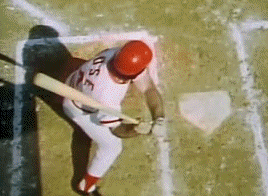
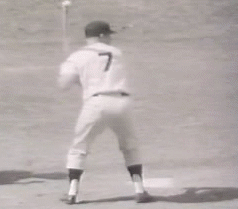
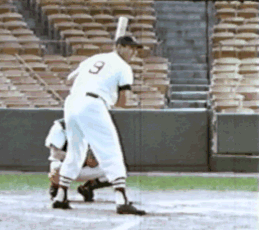
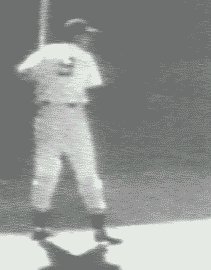
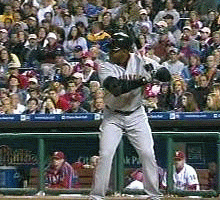
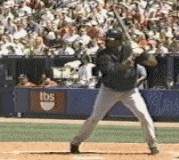
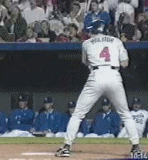
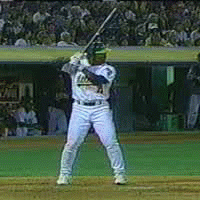
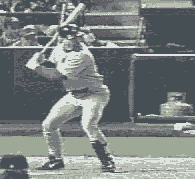
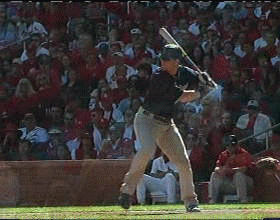
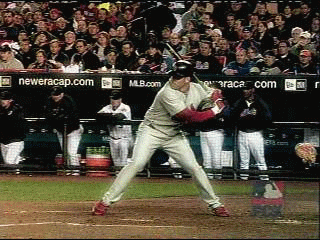
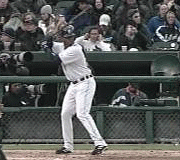
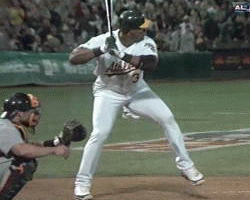

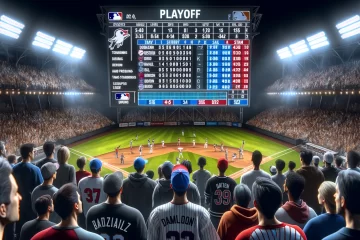

1 Comment
How Do I Choose The Right Baseball Bat For A Player With A Strong Uppercut Swing? · August 18, 2024 at 7:20 am
[…] https://blog.jeffnyveen.com/how-to-hit-a-baseball/ […]